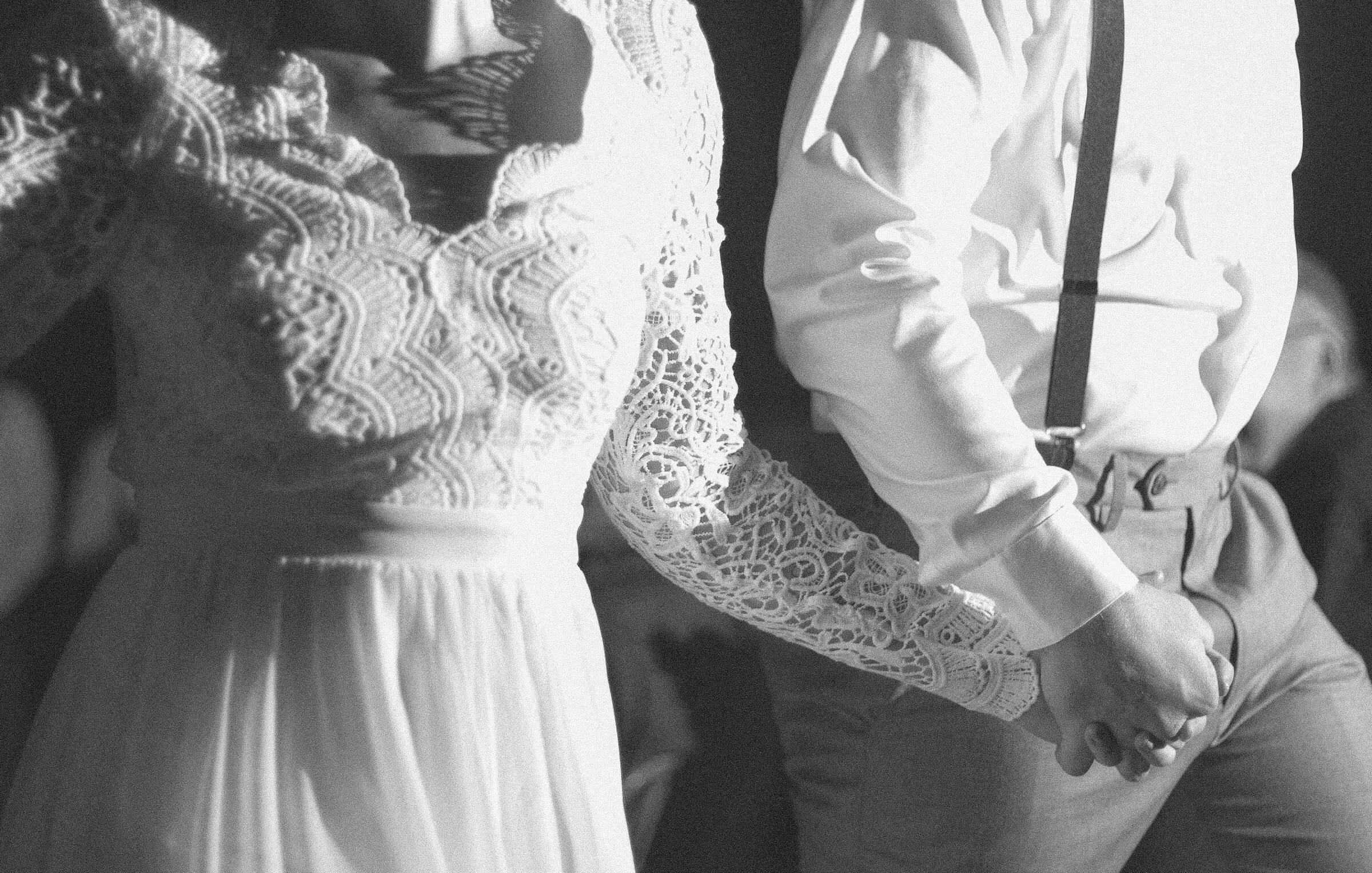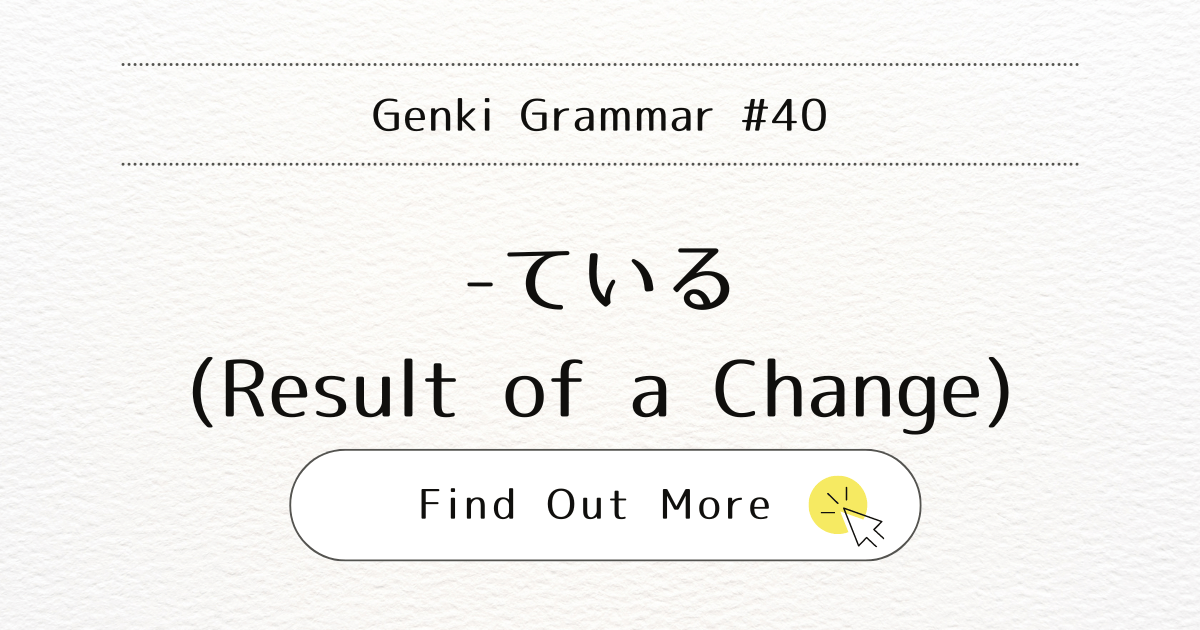
Introduction
In this post, we will learn how to use ている (teiru) to describe the result of a change. This form is used with verbs that indicate a change from one state to another. Understanding this usage will help you describe ongoing states resulting from past actions.
What It Means
Verbs in the second group, which we discussed in the previous post, describe changes from one state to another. For example, when you get married (結婚する, kekkon suru), your status changes from being single to being married. With these verbs, ている (teiru) describes the result of a change. A change happened in the past, and its significance remains until now.
When You Use It
Use ている (teiru) with change verbs to describe the result of a change. This structure indicates that the change occurred in the past, and the resulting state continues in the present.
Examples
佐藤先生は結婚しています。(Satou sensei wa kekkon shiteimasu.) – Professor Satou is married. (= state resulting from getting married)
マリアさんは窓の近くに座っています。(Maria-san wa mado no chikaku ni suwatteimasu.) – Maria is seated near the window. (= state resulting from seating herself there)
Here are some more examples of verbs commonly used in the -ている (-teiru) framework:
- 持つ (motsu) → 持っている (motteiru) – has
- 山田さんはたくさんお金を持っています。(Yamada-san wa takusan okane o motteimasu.) – Mr. Yamada has a lot of money.
- 知る (shiru) → 知っている (shitteiru) – knows
- 佐藤先生は母を知っています。(Satou sensei wa haha o shitteimasu.) – Professor Satou knows my mother.
*The negation of 知っています is 知りません (shirimasen), without using the ている form.
- 佐藤先生は母を知っています。(Satou sensei wa haha o shitteimasu.) – Professor Satou knows my mother.
- 太る (futoru) → 太っている (futotteiru) – is overweight
- マイケルさんはちょっと太っています。(Maikeru-san wa chotto futotteimasu.) – Michael is a little overweight.
- やせる (yaseru) → やせている (yaseteiru) – is thin
- 私の弟はとてもやせています。(Watashi no otouto wa totemo yaseteimasu.) – My younger brother is very thin.
- 着る (kiru) → 着ている (kiteiru) – wears
- マリアさんはTシャツを着ています。(Maria-san wa T-shatsu o kiteimasu.) – Maria is wearing / wears a T-shirt.
- 起きる (okiru) → 起きている (okiteiru) – is awake
- お母さんは起きています。(Okaasan wa okiteimasu.) – Mom is up and awake.
- 住む (sumu) → 住んでいる (sundeiru) – lives in
- 家族は東京に住んでいます。(Kazoku wa Toukyou ni sundeimasu.) – My family lives in Tokyo.
Note
Verbs like 行く (iku) and 来る (kuru) belong to the change class. Therefore, 行っている (itteiru) and 来ている (kiteiru) indicate the result of prior movements, not movements that are currently in progress. Be careful with the meanings of the following sentences:
- アメリカに行っています。(Amerika ni itteimasu.) – Somebody has gone to / is in the US (Not: She is going to the US).
- うちに来ています。(Uchi ni kiteimasu.) – Somebody has come over to visit (Not: Somebody is coming over).
To say that Maria is coming, use the present tense: マリアさんは来ます (Maria-san wa kimasu), because the present tense in Japanese refers to both the present and the future.
Conclusion
Using ている (teiru) to describe the result of a change helps you accurately express ongoing states resulting from past actions.



